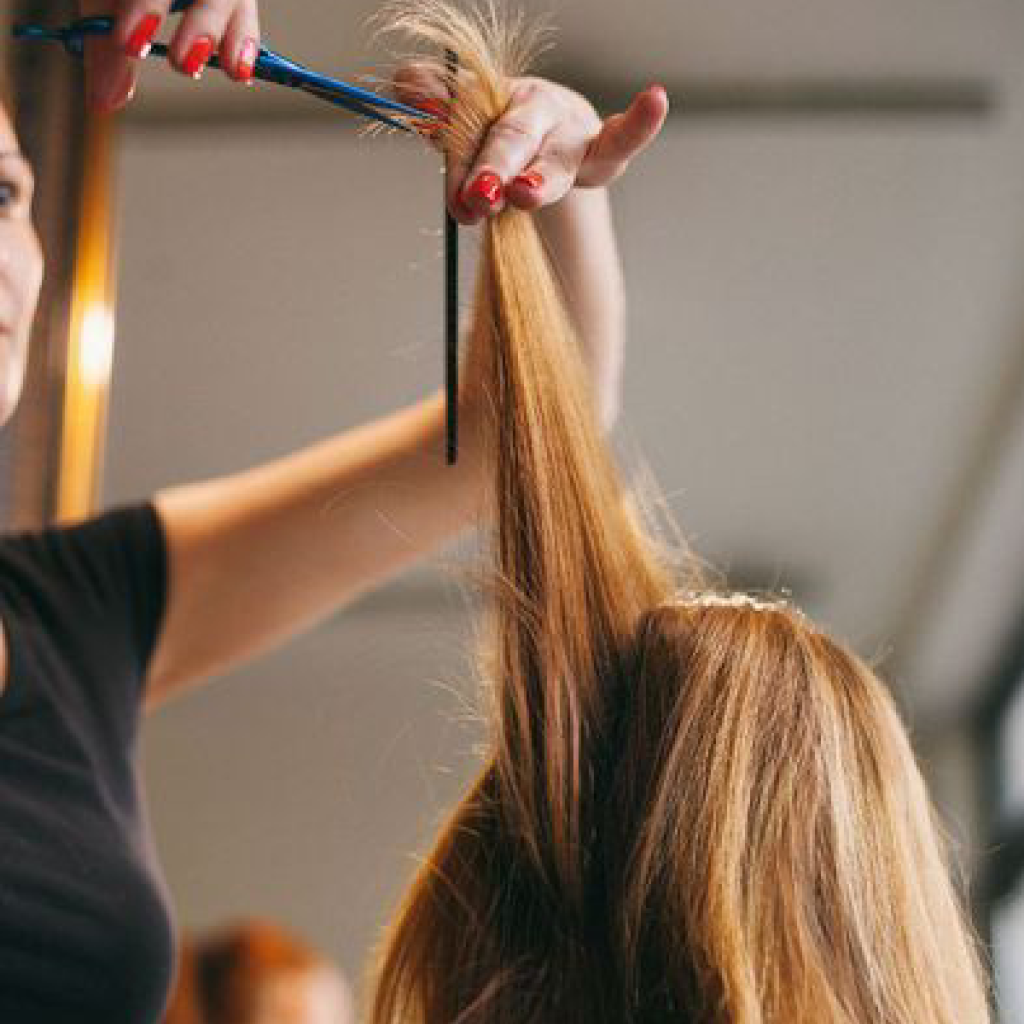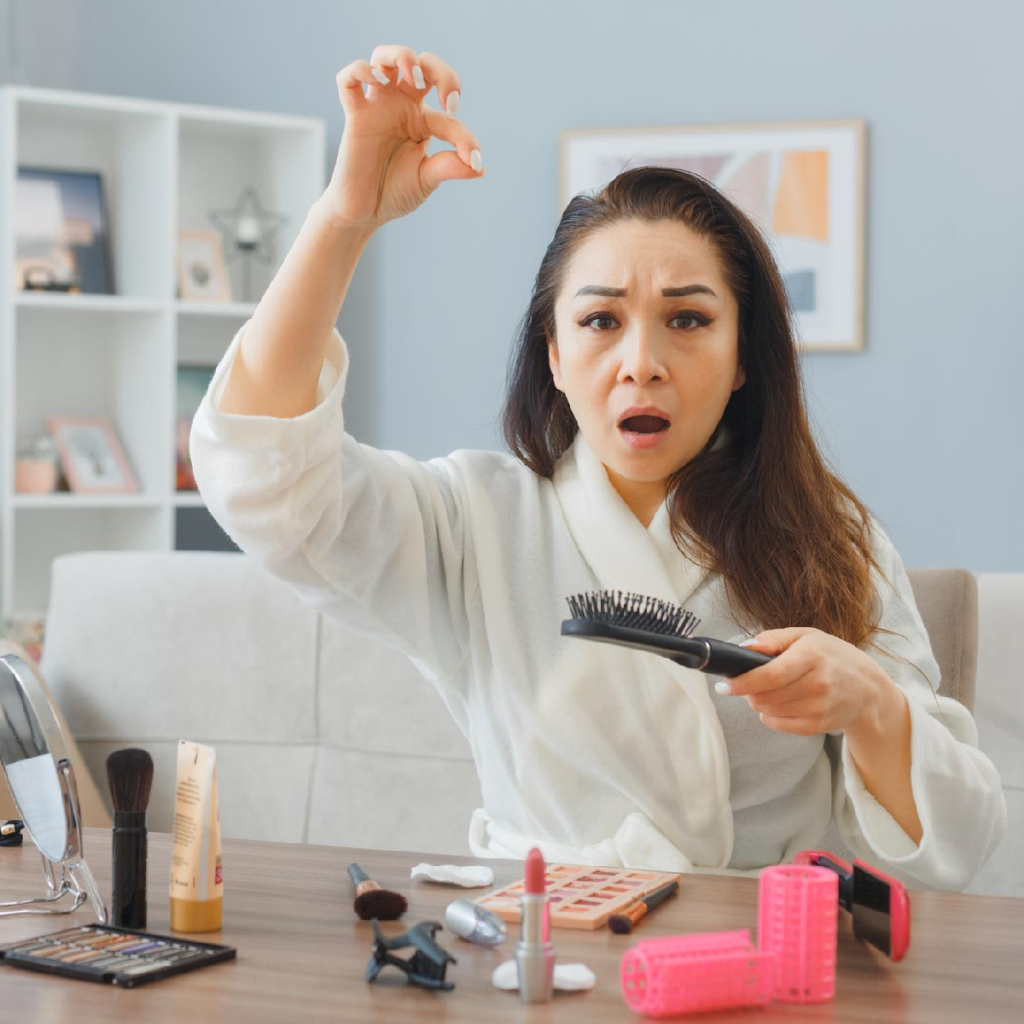Discover the truth behind hair growth rates and whether regular hair trims and avoiding heat can actually promote faster hair growth.
Can Regular Hair Trims and Avoiding Heat Increase Hair Growth Rates?
Do you dream of long, flowing locks that would make Rapunzel envious? Well, you’re not alone! Many people are on a quest for faster hair growth, willing to try anything to make those strands grow like weeds. But can regular hair trims and avoiding heat really increase hair growth rates? Let’s dive into the science behind hair growth and find out what really works.

Understanding Hair Growth
Before we explore the effects of trims and heat on hair growth, it’s essential to understand how hair actually grows. Hair growth is a complex process that occurs in cycles, with each hair follicle going through four distinct stages: anagen, catagen, telogen, and exogen.
The Hair Growth Cycle
In the anagen phase, which lasts for several years, the hair actively grows, adding length and thickness. During this phase, the hair follicle receives nourishment from the blood vessels in the scalp, allowing it to produce new cells and extend the hair shaft. It’s fascinating to think about the intricate process happening beneath the surface of our scalps, as our hair follicles work tirelessly to create the strands we see on the outside.
After the anagen phase, the catagen phase follows. This brief transitional stage lasts for about two weeks, during which the hair follicle shrinks and detaches from the blood supply. While the hair is no longer actively growing, it is still firmly rooted in the scalp.
Next comes the telogen phase, a resting period lasting about three months. During this time, the hair follicle remains dormant, and the hair shaft is fully formed. It’s important to note that not all hair follicles are in the telogen phase simultaneously. Instead, they enter this phase at different times, ensuring that we don’t experience hair loss all at once.
Finally, the exogen phase occurs when new hair pushes the old hair out, starting the cycle anew. This phase is often referred to as the shedding phase, as the old hair is released from the scalp. It’s normal to lose around 50-100 strands of hair per day during this phase, as part of the natural hair growth process.
Factors Affecting Hair Growth
Various factors influence hair growth rates, including genetics, age, health, and environmental factors. Our genetic makeup plays a significant role in determining the speed and thickness of our hair growth. Some individuals may have hair follicles that are more active during the anagen phase, resulting in faster and more abundant hair growth, while others may have hair follicles that spend more time in the telogen phase, leading to slower hair growth.
Age also affects hair growth. As we get older, the rate of cell division in our hair follicles slows down, leading to thinner and slower-growing hair. Additionally, hormonal changes that occur with age can impact the hair growth cycle, resulting in hair loss or thinning in certain areas.
Our overall health and lifestyle choices can also influence hair growth. A balanced diet rich in vitamins, minerals, and proteins is essential for optimal hair growth. Additionally, conditions such as stress, illness, and nutrient deficiencies can disrupt the hair growth cycle, leading to hair loss or stunted growth.
Environmental factors, such as exposure to harsh chemicals, pollutants, and excessive heat, can also impact hair growth. Overuse of styling tools that generate heat, such as straighteners and curling irons, can damage the hair shaft, leading to breakage and slower growth. Similarly, chemical treatments like perming, relaxing, or coloring can weaken the hair, making it more prone to breakage and hindering growth.
While we can’t control our genes or stop the aging process, there might be steps we can take to optimize hair growth. By understanding the intricacies of the hair growth cycle and being mindful of the factors that can influence it, we can make informed choices to promote healthy hair and maintain its vitality.
The Science Behind Regular Hair Trims
One prevalent myth claims that trimming your hair regularly promotes faster hair growth. But is there any truth to it?
Let’s dive deeper into the topic and explore the science behind regular hair trims.
The Myth of Trimming for Faster Growth
Sorry to burst your bubble, but trimming your hair won’t magically make it grow faster. Hair growth occurs at the scalp level, meaning that cutting the ends won’t affect the rate at which your hair grows from the roots. The idea that trimming stimulates hair growth is a common misconception.
However, there is a logical explanation for why this myth persists. When you trim your hair regularly, it helps to prevent split ends and breakage. As a result, your hair appears healthier and more voluminous, giving the illusion of faster growth. But in reality, the growth rate remains unchanged.
The Real Benefits of Regular Trims
While trims won’t give you super-fast growth, they are still essential for overall hair health. Regular trims help remove split ends, preventing them from climbing up the hair shaft and causing further damage. Split ends can make your hair look dull, frizzy, and unmanageable.
By getting rid of split ends through regular trims, you can maintain the integrity of your hair strands. This, in turn, helps to prevent breakage and allows your hair to grow longer over time. Additionally, trimming your hair can improve its texture, making it appear smoother and more polished.
Another benefit of regular trims is that they can help you achieve your desired hairstyle. If you’re growing out your hair or aiming for a specific look, getting rid of split ends and maintaining the overall shape of your hair is crucial. Trimming can help you avoid uneven lengths and maintain a neat and tidy appearance.
Furthermore, frequent trims provide an opportunity for your hairstylist to assess the condition of your hair and scalp. They can identify any underlying issues, such as dryness, damage, or scalp conditions, and recommend appropriate treatments or adjustments to your hair care routine.
In conclusion, while regular trims won’t directly influence the rate of hair growth, they play a vital role in maintaining the health and appearance of your hair. By preventing split ends, reducing breakage, and promoting overall hair integrity, trims contribute to the long-term health and beauty of your locks.
The Impact of Heat on Hair Health
We all love to style our hair using heat tools, but do we fully understand the consequences?
When it comes to hair health, the impact of heat cannot be ignored. Heat can be a double-edged sword – while it can create stunning styles, excessive heat can damage the hair shaft, leading to breakage, frizz, and dryness. The high temperatures from heat tools strip the hair of its natural moisture, leaving it vulnerable and weak.
But how exactly does heat damage our hair? The answer lies in the protein structure of our hair. Prolonged exposure to heat weakens this structure, making the hair more prone to damage. The heat causes the proteins to break down, resulting in a loss of strength and elasticity. As a result, the hair becomes more susceptible to breakage and split ends.
How Heat Damages Hair
When we use heat tools such as flat irons, curling irons, or blow dryers, the high temperatures cause the cuticle, the outermost layer of the hair, to lift. This lifting of the cuticle allows moisture to escape, leading to dryness and frizz. Additionally, the heat can also cause the hair to lose its natural oils, further exacerbating the dryness.
Furthermore, the intense heat can cause the hair shaft to become brittle and weak. The proteins that make up the hair shaft can become damaged, leading to a loss of structural integrity. This damage not only affects the appearance of the hair but also its overall health.
Heat and Hair Growth: Is There a Connection?
Many people wonder if heat has any impact on hair growth. The truth is that heat-induced damage primarily affects the visible portion of the hair, rather than the roots. Therefore, avoiding heat won’t directly stimulate hair growth. However, by protecting your hair from heat damage, you can retain length and minimize breakage, giving the illusion of faster growth.
It’s important to note that excessive heat can also lead to scalp issues. The heat can cause the scalp to become dry and irritated, leading to dandruff and itchiness. This can further hinder hair growth and overall hair health.
To minimize the impact of heat on your hair, there are a few precautions you can take. First and foremost, always use a heat protectant spray before applying heat to your hair. This will create a barrier between the heat and your hair, reducing the damage caused. Additionally, it’s important to use heat tools on the lowest setting possible and avoid excessive heat exposure.
Furthermore, incorporating deep conditioning treatments into your hair care routine can help restore moisture and repair any damage caused by heat. These treatments provide much-needed hydration to the hair, leaving it soft, smooth, and resilient.
In conclusion, while heat can be a valuable tool for styling our hair, it is crucial to understand the potential consequences. By taking proper precautions and minimizing heat exposure, we can enjoy beautiful hairstyles without compromising the health of our hair.
Practical Tips for Boosting Hair Growth
Now that we’ve busted a myth and shed light on the impact of heat, let’s explore some practical ways to boost hair growth naturally.

Alternatives to Heat Styling
Give your hair a break from the heat! Embrace heatless styling options like braids, buns, or twists to protect your hair from damage. Not only will you minimize breakage, but you’ll also discover a world of new hairstyles to experiment with!
The Role of Diet and Nutrition
Eating a balanced diet rich in vitamins and minerals is not only beneficial for your overall health but also for your hair. Nutrients like biotin, vitamin E, and omega-3 fatty acids promote healthy hair growth. So load up on avocados, nuts, and salmon for luscious locks.
The Importance of a Healthy Scalp
Healthy hair starts with a healthy scalp. Keep your scalp clean and well-nourished by using gentle shampoos and avoiding harsh chemicals. Massage your scalp regularly to stimulate blood circulation and promote hair growth.
Conclusion: Can Trimming and Avoiding Heat Really Increase Growth Rates?
So, after our hair-raising journey through the science of hair growth, what’s the verdict? Trimming your hair or avoiding heat won’t magically make your hair grow faster, as growth occurs at the root level. However, regular trims and heat protection play vital roles in maintaining healthy hair and preventing breakage, which can create an illusion of faster growth.
Weighing the Evidence
While there may be no quick fixes for ultra-rapid hair growth, adopting a holistic approach that includes regular trims, heat protection, and healthy hair care practices can help you achieve your hair goals in the long run.
Personalizing Your Hair Care Routine
Remember, every individual’s hair is unique, and what works for one person may not work for another. Experiment with different techniques and products to find the perfect hair care routine that works for you.
So, while we may not have found the secret formula for doubling hair growth overnight, a little bit of TLC can go a long way in nurturing your locks and embracing your hair journey. Enjoy the process, and who knows? Your dream of hair that would make Rapunzel envious might just become a reality!





